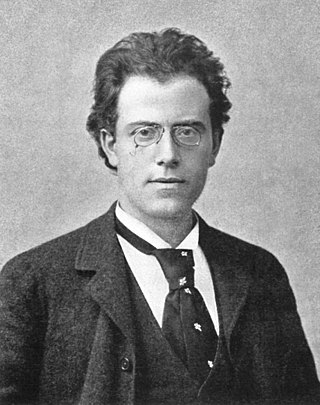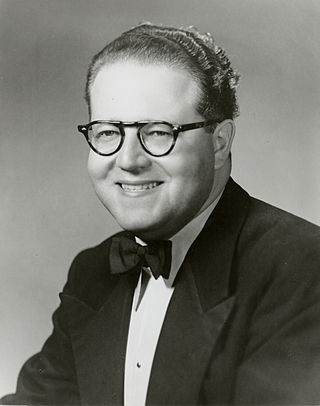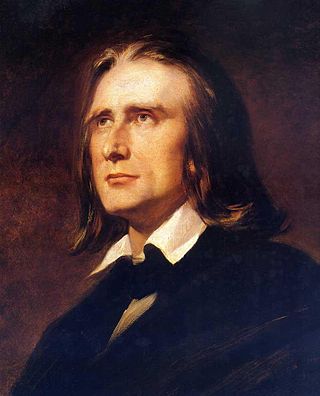
The Symphony No. 1 in D major by Gustav Mahler was mainly composed between late 1887 and March 1888, though it incorporates music Mahler had composed for previous works. It was composed while Mahler was second conductor at the Leipzig Opera in Germany. Although in his letters Mahler almost always referred to the work as a symphony, the first two performances described it as a symphonic poem and as a tone poem in symphonic form, respectively. The work was premièred at the Vigadó Concert Hall in Budapest, Hungary, in 1889, but was not well-received. Mahler made some major revisions for the second performance, given at Hamburg, Germany, in October 1893; further alterations were made in the years prior to the first publication, in late 1898. Some modern performances and recordings give the work the title Titan, despite the fact that Mahler only used this label for the second and third performances, and never after the work had reached its definitive four-movement form in 1896.

Alfred Reed was an American neoclassical composer, with more than two hundred published works for concert band, orchestra, chorus, and chamber ensemble to his name. He also traveled extensively as a guest conductor, performing in North America, Latin America, Europe and Asia.

The Violin Concerto in D minor, Op. 47 of Jean Sibelius, originally composed in 1904 and revised in 1905, is the only concerto by Sibelius. It is symphonic in scope and included an extended cadenza for the soloist that takes on the role of the development section in the first movement.

The Symphony No. 96 in D major, Hoboken I/96, was completed by Joseph Haydn in 1791 as part of the set of symphonies composed on his first trip to London. It was first performed at the Hanover Square Rooms in London on 11 March 1791. Although it is the fourth of the twelve London symphonies by number, it was actually the first one written and performed. It is popularly known as the Miracle Symphony.

Also sprach Zarathustra, Op. 30 is a tone poem by Richard Strauss, composed in 1896 and inspired by Friedrich Nietzsche's philosophical 1883–1885 novel Thus Spoke Zarathustra. The composer conducted its first performance on 27 November 1896 in Frankfurt. A typical performance lasts thirty-three minutes.

Anton Bruckner's Symphony No. 2 in C minor, sometimes known as the "Symphony of Pauses", was completed in 1872. It was actually the fourth symphony composed by Bruckner, after the Symphony in F minor (1863), the Symphony No. 1 in C minor (1866), and the Symphony in D minor (1869).

Ein Heldenleben, Op. 40, is a tone poem by Richard Strauss. The work was completed in 1898. It was his eighth work in the genre, and exceeded any of its predecessors in its orchestral demands. Generally agreed to be autobiographical in nature despite contradictory statements on the matter by the composer, the work contains more than thirty quotations from Strauss's earlier works, including Also sprach Zarathustra, Till Eulenspiegel, Don Quixote, Don Juan, and Death and Transfiguration.

Sir Edward Elgar's Introduction and Allegro for Strings, Op. 47, was composed in 1905 for performance in an all-Elgar concert by the newly formed London Symphony Orchestra. Scored for string quartet and string orchestra, Elgar composed it to show off the players' virtuosity. Though initial critical reception was lukewarm at best, the score soon came to be recognized as a masterpiece. The work, which is roughly twelve to fourteen minutes in length, is like a multi-layered symphonic poem for string orchestra, with several prominent themes.
Samuel Robert Hazo is an American composer, primarily of music for concert band.

The Symphony No. 70 in D major, Hoboken 1/70, was written by Joseph Haydn to mark the start of construction of a new opera house on the Eszterháza estate. It was premiered on December 18, 1779—one of the few Haydn symphonies where the exact premiere date is known.

The Sinfonietta from 1926 is a late work for large orchestra by the Czech composer Leoš Janáček. It is dedicated "To the Czechoslovak Army" and Janáček said it was intended to express "contemporary free man, his spiritual beauty and joy, his strength, courage and determination to fight for victory". It started by Janáček listening to a brass band, becoming inspired to write some fanfares of his own. When the organisers of the Sokol Gymnastic Festival approached him for a commission, he developed the material into the Sinfonietta. He later dropped the word military. The first performance was in Prague on 26 June 1926 under Václav Talich.
The Symphony No. 3 in E♭ major, Op. 97, also known as the Rhenish, is the last symphony composed by Robert Schumann, although not the last published. It was composed from 2 November to 9 December 1850 and premiered on 6 February 1851 in Düsseldorf, conducted by Schumann himself, and was received with mixed reviews, "ranging from praise without qualification to bewilderment". However, according to A. Peter Brown, members of the audience applauded between every movement, and especially at the end of the work when the orchestra joined them in congratulating Schumann by shouting "hurrah!".

Jack Stamp is a North American wind ensemble conductor and composer. He has approximately sixty compositions available from Neil A. Kjos Music Company, including his most well-known piece, Gavorkna Fanfare, which was dedicated to Eugene Corporon. In 1993, he formed the Keystone Wind Ensemble, comprising students, alumni and professors at Indiana University of Pennsylvania, which has been recorded on 16 albums.

Frigyes Hidas was a Hungarian composer.

Les préludes, S.97, is the third of Franz Liszt's thirteen symphonic poems. The music was composed between 1845–54, and began as an overture to Liszt's choral cycle Les quatre élémens, then revised as a stand-alone concert overture, with a new title referring to a poem by Alphonse de Lamartine. Its premiere was on 23 February 1854, conducted by Liszt himself. The score was published in 1856 by Breitkopf & Härtel. Les préludes is the earliest example of an orchestral work entitled "Symphonic Poem".
October is a contemporary piece for concert band that was written by Eric Whitacre in 2000. Based on the guidelines as established by the authors of Teaching Music through Performance in Band, October is a Grade 5 piece.

The Octet for wind instruments is a chamber music composition by Igor Stravinsky, completed in 1923.
Charles Rochester Young (1965) is an American composer, music educator, conductor and saxophonist.
Peter Aloysius Meechan is a British composer, conductor, and music publisher.












